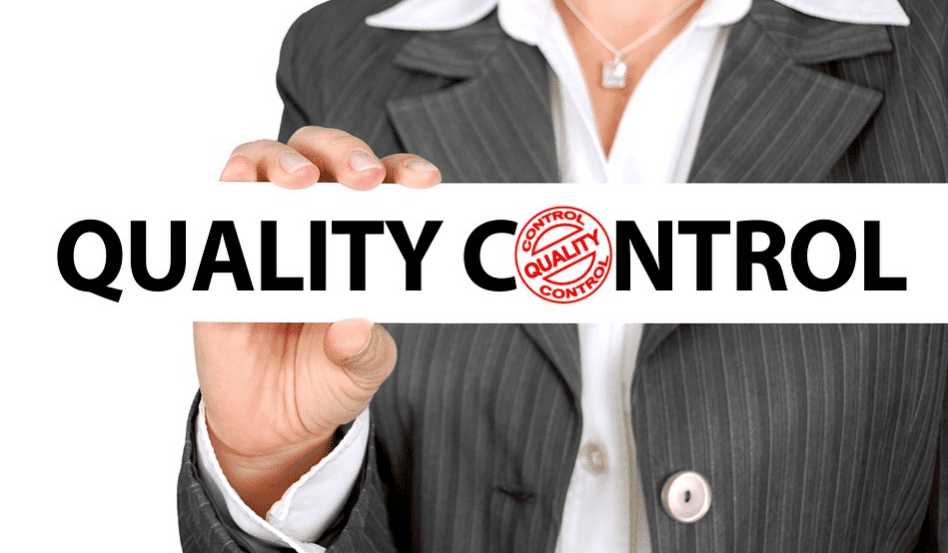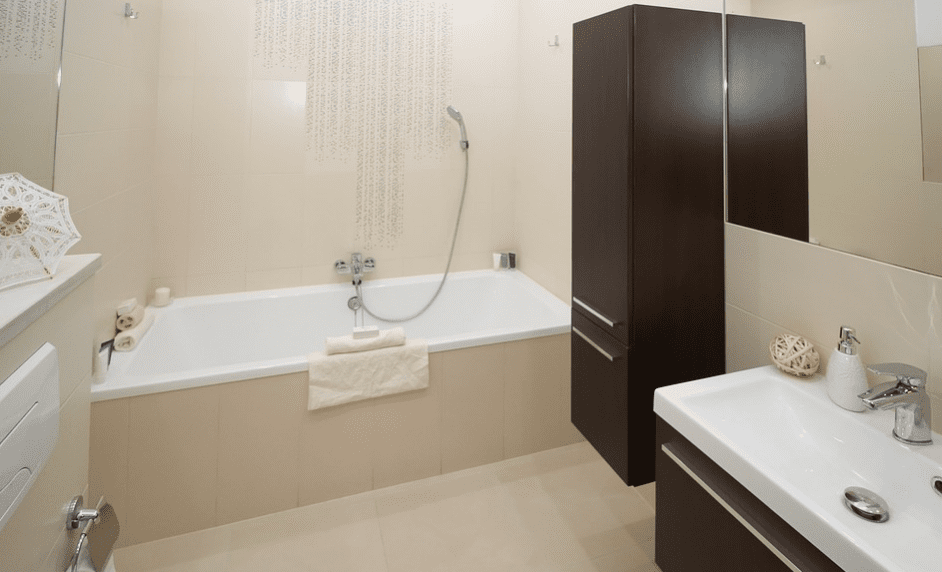For the tenant, moving out can be a time of exciting changes as they head off into a new branch of their life. For the landlord, it means back to business as usual. It also means the added stress of handing over the unit from one tenant to the next. Without the structure and guidance of a “tenant move out checklist,” this can quickly become a messy and frustrating affair.

If you’ve been in this situation before, you probably know that it’s a complex process. If you’re new to this, you might be taken by surprise at how many steps there are. Whichever group you belong to, it’s in your best interest to come up with a checklist to guide you each step of the way. Having one can help you maintain your sanity!
Tenant move out checklist for the lease agreement
Check the lease agreement
As the landlord of a mobile home park, you probably have too many tenants to always know whose contract has run its course. However, the lease should be the first thing you look at. Depending on when the tenant is terminating their agreement, you will need to follow a different procedure.
There might be special clauses in your lease agreement with a specific tenant, especially if they own their own home. The lease usually outlines responsibilities in terms of caring for the home and what’s considered “wear and tear” or not.
Correct notice procedure
How a lease is terminated lawfully can follow a different process depending on:
- whether the tenant has decided to move out,
- the lease has come to an end and won’t be renewed,
- or the tenant is being evicted.
In all three cases, the letter of the law should be closely followed to ensure no disputes arise. Luckily, the Manufactured Home Landlord Tenant Act spells these procedures out in all cases.
In all instances, the party that wants to terminate the lease needs to notify the other by a given time before the moving out date. For example, a landlord and tenant need to provide each other with a month’s notice before the end of a lease. The notice then needs to be acknowledged by the other party.
The landlord must provide a final “move out” letter to the tenant. This lets them know when the moving out inspection will take place and how they need to prepare for it. You can find an example of such a letter here.
Transfer of rental
In a mobile home park, you may find yourself renting out a lot with a tenant-owned mobile home. If the tenant decides to sell the home, chances are the new tenant will take their place. Consequently, this will require a transfer of the rental. As the landlord, you have the right to approve or reject a new tenant. Make sure if this is the case so that you can start the procedure.
Apply for tax exemption
As a bonus checklist item, check with your local tax authorities to see if an unoccupied lot in your park qualifies for a tax exemption. If you could go a long time without filling the lot, there is no reason to keep paying tax on it. Each state is different in how they handle these situations so you should contact yours specifically to find out if it’s at all possible.
Pre-moving out inspection
As you will be conducting a number of inspections, it’s important that you know the difference between “wear and tear” and “damage.” Wear and tear is damage that would’ve probably occurred anyway and isn’t necessarily to blame on the tenants. On the other hand, damage can be directly attributed to the tenants.
Damage will need to be fixed by the tenant. Where the landlord must make repairs, the deposit can be used to cover the cost. In this article by Rentec Direct, they provide a few examples of how to distinguish between the two.

Notify
First of all, you should make sure that your tenant has been notified and that they are aware of the pre-moving out inspection. This is to give them some time to prepare by cleaning the mobile home, the yard, and fixing any small issues. There is no practical value in trying to surprise, or “catch out”, your tenant. In fact, it might just sour relationships and the whole process.
If you want, you could even serve them with an inventory and a checklist of what you’ll be looking at during the inspection. However, it’s usually better to leave this until the pre-inspection as you can give them specific actions to take. Give the tenant enough time to prepare and find a gap in their schedule to attend the inspection. Anywhere between 3 days to a week is considered acceptable.
Inspection and identify remedial action
Landlords typically perform an inspection before the final inspection. This allows them to identify damage caused by the tenant as well as typical wear and tear damage that has to be fixed. Try to keep in mind that we are all prone to accidents from time to time. Damage caused isn’t necessarily because of neglect or maliciousness.
Every park and home is different so make sure that you have a comprehensive list for your situation. Create a checklist with all the fixtures in the home. You can use the list below as a guide. At the end of the inspection, give the tenant the list of items they need to fix or calculate a sum that they should pay you to have it fixed.
Here is a list of the most critical/common things you should check during the pre-move out inspection:
Electrical
- Appliances/Electronics: Make sure that all electronics that come with the home are in working order, that they are clean inside and out, and that they are all accounted for. This is especially important for kitchen appliances such as the oven and microwave.
- Power outlets: Make sure that all wall sockets are working correctly and that they don’t spark or make noises when used. These could be damaged as a result of wear and tear or misuse.
- Light switches: The same goes for light switches as for power outlets. If there are problems, it’s usually due to wear and tear and could point to more significant issues with the home’s electrical system.
- Fire/smoke alarms: All mobile homes are required to have a minimum number of working fire alarms in specific areas of the home. They should all be up to code.
Structural
- Doors: Make sure all doors are in good condition and still work correctly. Also, make sure that they can lock/unlock as well as that the keys are accounted for.
- Windows: Same goes for the windows as the doors.
- Flooring: Check for any damage to the floor. Here, there can be some grey area as to what’s considered wear and tear or tenant damage. Loose or damaged carpeting, vinyl, and hardwood floors will need to be fixed at some point.
Other
- Kitchen: A lot can go wrong in the kitchen. Look for damage to the countertops, cabinets, etc. Also, make sure the sink is working and whether there is any water damage.
- Bathroom: Check the condition of the bathroom, specifically the sink, toilet bowl, shower, and bath. Check for mold and that everything is in working order. Also look for any signs of water damage.
- Storage units: Make sure any other storage units in the home are in good condition. The hinges should be working. Those that can be locked should be working and have keys. And the interior should be acceptable.
- Skirting: Most skirting damage will be typical wear and tear, but it could also be damaged by residents relatively easily.
- Yard: In all likelihood, there won’t be enough time for a resident to fix the yard between the pre-inspection and the final moving out day. However, you should at least inspect the condition and prepare yourself for any work that’s needed.
- Cleanliness: You would be surprised at the spectrum of sanitation and cleanliness among tenants. A home could be spotless, a pig sty in need of a professional cleaning service, or anything in between.
Bonus tips: Some tenants may try to deceive you by hiding damage behind furniture, under carpets, etc. So, try and be thorough by checking behind/under everything that seems suspicious or that could hide damage.
Check the status of the home’s systems
Except for all the small things like we just discussed, there are a few very vital parts of the home that must be inspected. These are:
- The furnace/HVAC system
- The main electric switch
- The water heater
All three of these could be in a bad condition either because of misuse by the tenants or typical wear and tear. You will most likely need to hire a professional to fix or service any one of these (and should do so anyway in between tenants). Establish whether any damage is your or the tenant’s responsibility and ask them if they’ve had it serviced and how long ago.
Additions
If the tenant made additions to the home, there may be some grey area as to what happens next. Hopefully, you have dealt with this subject in your lease agreement. There are some cases in which a landlord approved a tenant’s proposed additions (e.g. a deck or porch) but doesn’t want it around when the tenant moves out. In any case, you will need to decide whether you want the tenant to leave it, dismantle it, or clean/restore it in case of damage.

Receive the final month’s rent & utilities
Depending on the exact circumstance of the tenant moving out and the timing, you might still need to collect the last month’s rent from them. Make sure that they are aware of the sum that still has to be paid and don’t give them the deposit until it’s safely in your pocket! Although it might seem sensible to just take the deposit as the final rental payment, you may still not be 100% sure what damages you will need to pay for.
Depending on how you distribute utilities to your tenants, you should make sure that the “soon-to-be-ex-tenant’s bills” are up to date. If not, you might be hounded by the city to settle their account. This is usually limited to the water and electricity bill. However, you may also charge other levies for services such as garbage collection, cable, etc.
Final inspection
The final inspection should be carried out on the day that the tenant moves out of the home. There will be a lot happening this day, so as always, make a checklist of the following items and make sure you tick off each one.
Inventory
You might’ve already covered this at the pre-inspection, however, anything can happen in a few days (or weeks). Make sure that all the appliance, fixtures, carpets, curtains, or whatever other loose items came with the home are accounted for. If not, you’ll deduct this from the deposit. Also, make sure that the tenant has removed any of their property or trash. Otherwise, it will be your responsibility.
Cover anything from the initial inspection
Go over everything that you asked the tenant to fix or repair during the first inspection. If they have not done so, you can also deduct the cost of settling it yourself from the deposit. Also, make sure there is no new damage. The tenant should sign off on all of the damages you are going to claim from the deposit to avoid any conflict later on.
Collect keys
Lastly, don’t forget to collect the keys from your tenant. Hopefully, all has gone smoothly up until this point and you can shake hands and wish each other the best of luck for the future.
Release the deposit
As the landlord, you have the right to keep the deposit for up to ten days after the tenant has moved out, handed over the keys, and the final inspection has been made. You can then use whatever amount of the deposit you need to repair damages or clean the home so that it’s as if the previous tenant was never there. Remember to not deduct any wear and tear.
If you have not done so, be sure to provide an invoice. On it, explain any deductions so that the tenant knows why the deposit is less than what they paid.
Make the home rental ready
Thorough interior and exterior inspection
Some landlords do the last, thorough inspection on move-out day. However, it can be a lot to take on your plate. A lot of these parts of the home, particularly the exterior, fall under typical wear and tear, which means it’s not the responsibility of the tenant. That’s why we recommend that you do a comprehensive inspection after the fact to cover the following:
- Windows
- Doors
- Insulation
- Kitchen
- Bathroom
- Roof
- Skirting
- Wall panels
- Drains
- Vents
- Level of the home
- Yard
- Gutters
- Underbelly
- Ceiling cavity
- Light/fixtures
- Fire alarms
- Yard
- Additions
- HUD Code: This is not, strictly speaking, necessary. However, if you’re a stickler for the rules or have reason to doubt the home’s integrity, you can hire a professional to inspect the home for HUD-compliance.

Clean and repair the home
Once you have completed the final inspection, it’s time to repair any of the remaining damage and clean the home until it’s spotless. According to the Manufactured Home Landlord/Tenant Act, it’s the landlord’s responsibility to ensure that the accommodation is in a habitable condition. So, don’t cut any corners! If nothing else, it will ensure the longevity of the home as a profit-making asset.
A little effort goes a long way!
If your head is spinning a little at all the things you need to keep track of, just imagine how bad it will be if you have to wing the whole process! This is one of those situations where a little bit of preparation can save you a huge amount of time and energy. So, do it right the first time and come up with a checklist that can be easily reused for each future tenant. You might miss a few things, but after you’ve had one or two rodeo’s, you’ll tackle it like a pro.
Of course, after you have covered everything in the tenant move out checklist, it’s time to find a new tenant by listing your home and marketing your mobile home park. If your tenant took their home with them and you’re now stuck with an empty lot, you might also want to implement one of these ways to fill a vacant lot.


